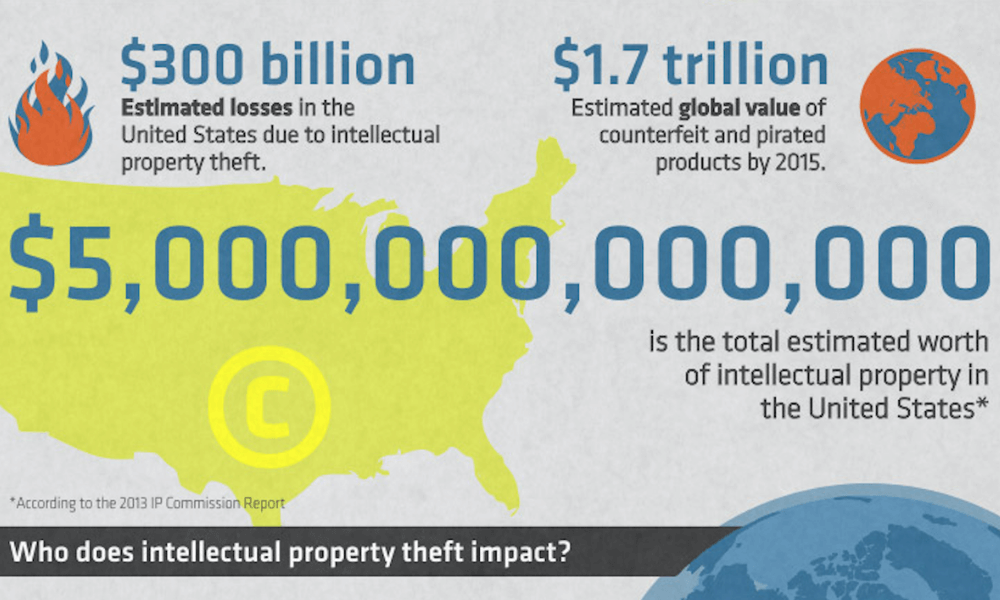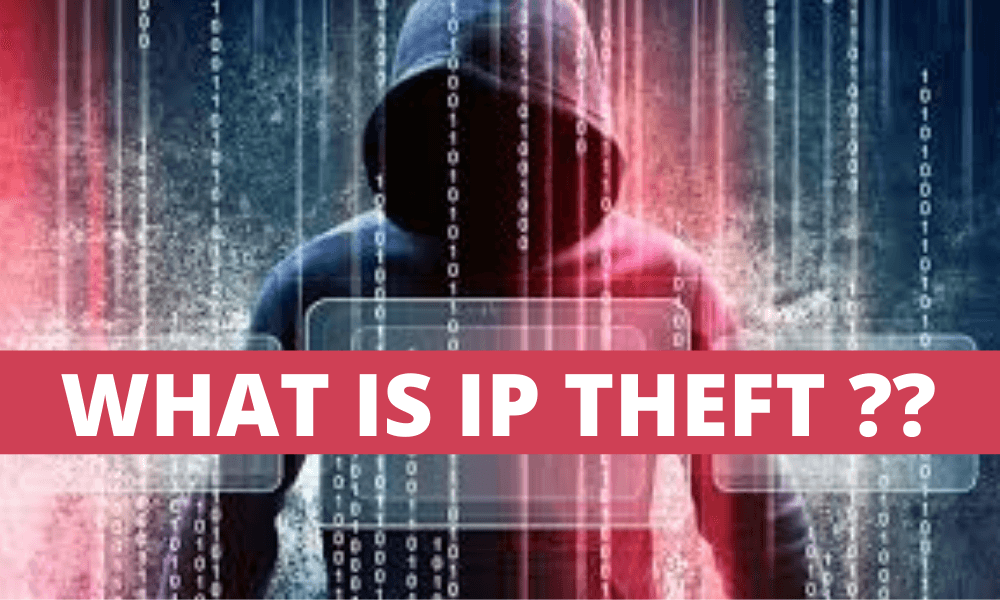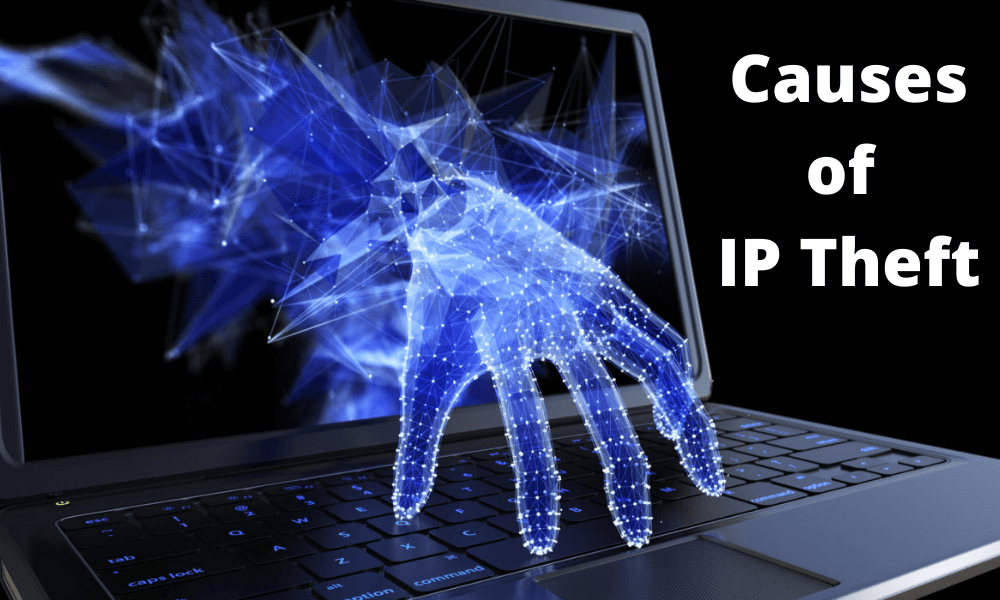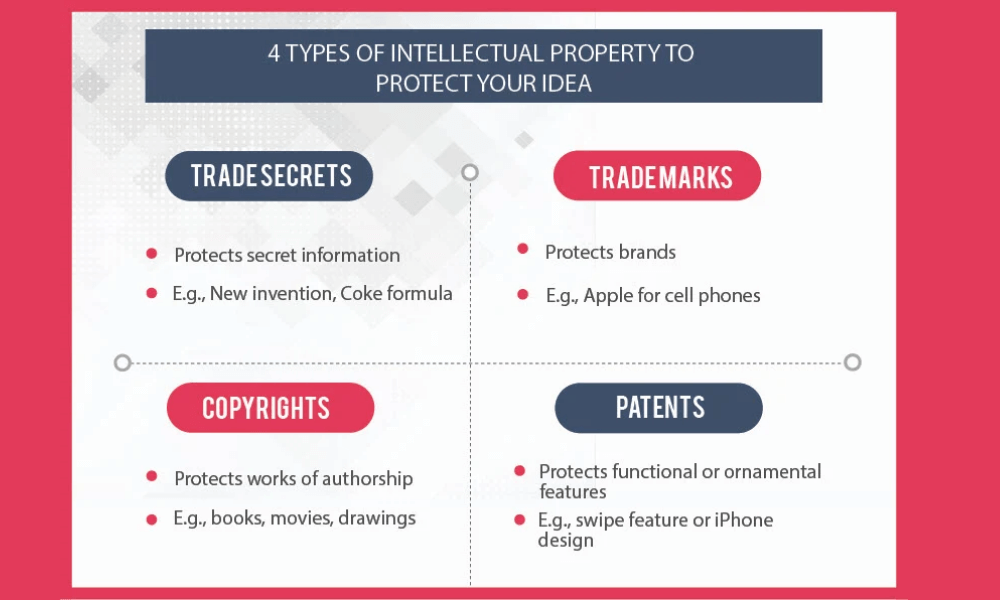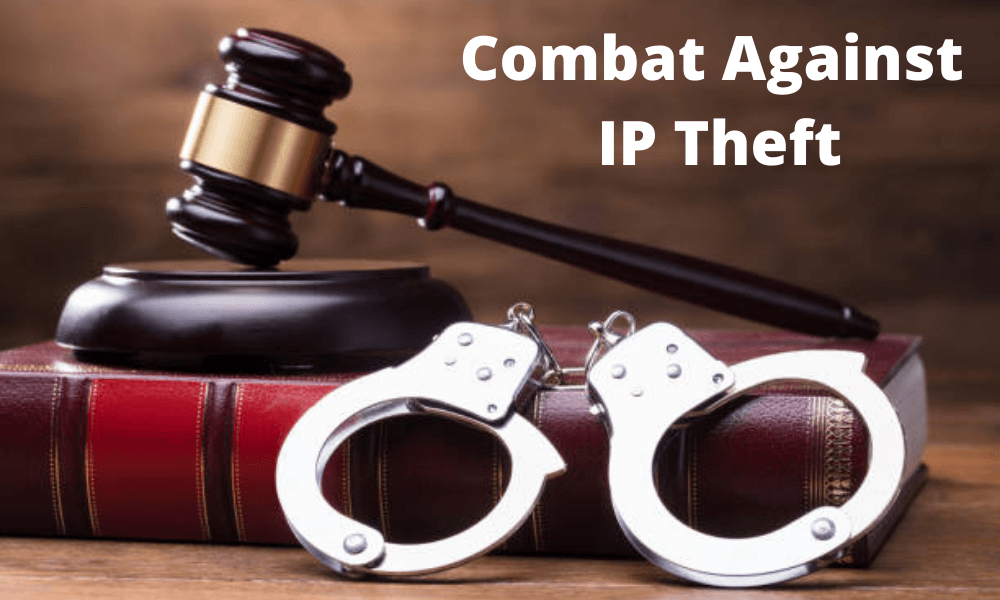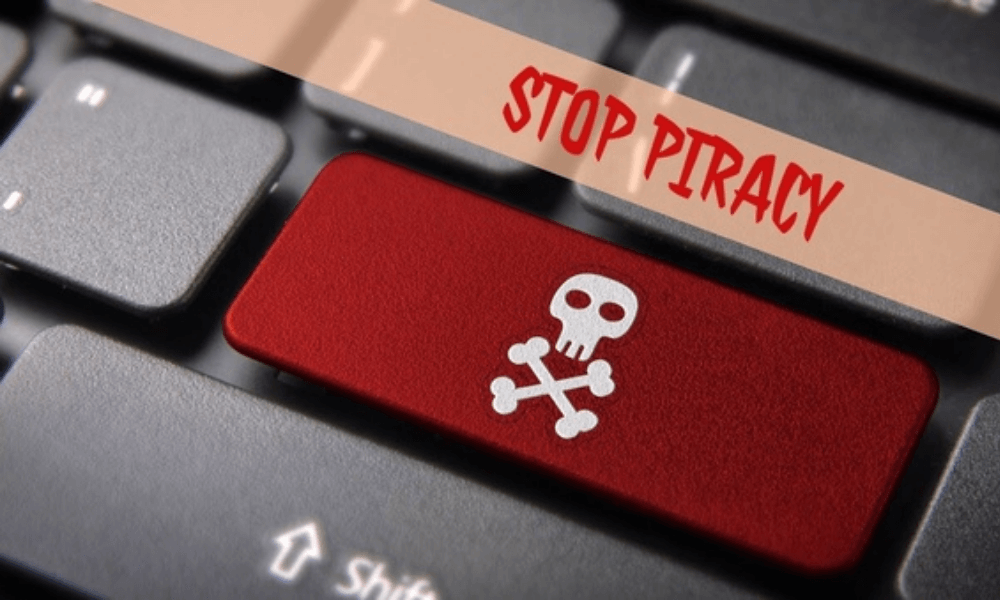The Internet Protocol (IP) and the Intellectual Property (IP) used all over in this article are different from eachother . The cost of Stealing intellectual property (IP Theft) is between $225 billion and $600 billion annually in the United States. $8.64 million is the average cost of business breaches in the US. The patent lawsuit average cost exceeds $3 million. Approximately 12,000 cases are filed with reference to Intellectual Property Theft each year in the US.Read more on IP Theft Statistics
What is Intellectual Property Theft
Intellectual Property theft is the unauthorized usage of valuable intellectual property without the permission of the creator. Intellectual property refers to any new creative, commercial novelty & unique, as well as any economic system that has a distinctive mark like the company logo. The variations of the intellectual property consist of
- Concept & Ideas
- Mechanical Innovations and Invention
- Researches & Poems
- Brands & Logos
- Other miscellaneous innovative and unique products or services.
Traditionally, intellectual property is protected by regulatory mechanisms like patents, copyrights, and licenses; this protection is being extended to include software and business processes when these can be demonstrated to be original, groundbreaking, and new. When business intelligence has an obvious worth in enterprise competitiveness and is widely integrated into operations, it may be considered a form of intellectual property.
For the protection and security of Intellectual property the law of the land deals through “Patent for Innovations & Inventions”. Therefore Music, Tunes, Paintings, Photo, Poems, Articles and Researches are protected through “Copyrights” while Logos and Brands are secured through “Trademarks”. Federal and state law both protects the intellectual IP theft.
Root Causes of Intellectual Property Theft
There are various causes that ignites the factor of IP theft, here are a few that we analyzed as vital to the issue.
Privilege Exploitation
From the survey responders, 38% identified privilege abuse as their primary concern for security. Employees who commit economic espionage exploit their access to sensitive documents most commonly so as to steal trade secrets.
A group of conspirators at GlaxoSmithKline deliberately stole trade secrets on behalf of a Chinese company to help them prepare their own version of the drug. To the United States Attorney, who was in charge of this case, A GSK scientist emailed and transferred trade secrets to his China-based associates.
There are at least two defendants who pleaded guilty to intellectual property theft in 2018, but the full financial damage of their actions has not yet been calculated.
Human Error
when due to your habits you come across an adverse situation, usually Human error triggers accidents and bad situations. Negative events occurred from failing to produce the required results.
According to a survey, 51% of Survey respondents said human errors are a common way of infringing on intellectual property theft. Whenever employees lose or share their company devices with unauthorized parties, confidential data is leaked.
An incident happened in October 2017 Where an Apple Engineer brought his daughter to work and made a vlog. The footage showed an iPhone X with special QR codes and apps that also included code names of unreleased Apple products. After his daughter’s video went viral on YouTube, he was fired from Apple.
Hacking Through Malwares
Of the same survey 42% of the respondents claimed malware infiltration as a root cause to IP theft. Malicious software lets hackers take over an enormously prodigious amount of IP. Using Spear-Phishing techniques to trick people into handing over their passwords can lead to the theft of large volumes of company data.
An incident happened from 2006 to 2018 when Advanced Persistent Threat 10 (APT 10) a renowned hacking team threatened U.S. companies, and agencies were targeted by foreign hackers so they could steal information on a number of technologies.
The hackers also targeted managed service providers (MSPs), gaining access to the networks of their clients. The invaders used spear-phishing methods so as to introduce malware on victimized computer systems, stealing hundreds of gigabytes of intellectual property and other confidential business and technological information.
Why Do Intellectual Property Theft Is Done?
Intentionally exploiting another person’s intellectual property without permission is easier to commit than it might seem. It’s not difficult for thieves to bargain intellectual property without the victims even realizing it.
Intellectual property infringers can enjoy the benefits of stealing intellectual property without doing any work. Copyright infringement can have a wider effect on rights holders than just lost revenue. It’s possible that the infringement of the intellectual property could result in one or more of these harms:
- Damage to reputation.
- Loss of job.
- Physical harm.
Categories of Intellect Property
Intellectual property (IP) is most commonly stolen in one of two categories: securing violations and misappropriations. The sort of intellectual property that is stolen will determine the route you take to prosecute a thief. Recognized types of IP are given below:
Copyrighted Stuff
is an appearance of uniqueness & creativity or a fixed tangible representation that would include articles, poems, software, photography, paintings and books
Patented Stuff
A patent is the conferring the property right by governmental authority to the inventor or innovator. The document give exclusive rights to the patented procedure, Style or design, or creation or innovation for a specified period
Trademarked Stuff
What’s protected as a trademark are words or symbols or phrases that classify a brand.
Trade Secrets
A trade secret is any information, item or technique that a business values and keeps confidential so as to maximize its value.
Intellectual Property Rights
Each type of intellectual property is different, and your rights are determined by who owns the intellectual property. If you see any violation of the list of rights, then you may have the right to bring a lawsuit.
Trademark
When someone registers a trademark, they have the right to stop others from using a similar or same mark.
Copyright
With a copyright, you are given several rights. These include:
- Reproducing the work
- Expression of derivative work
- Distribute units of work
- Public display of work
- Sell units of work
Trade Secrets
The owner of trade secrets has certain rights, including a right to:
- Keep the secret hidden from others, do not reveal it.
- Stop others to use, reuse or benefit out of it
- Request that the other party signs a nondisclosure agreement before disclosing the secret.
- A trade secret can’t be stolen or used by others if the organization takes care to make sure no one knows it’s a strategy.
How Do You Know If Someone Has Theft Your Intellectual Property?
Theft of intellectual property occurs when someone meaningfully uses, steals, takes, or steals property that comes under the defense of rules around intellectual property. So as to qualify as theft, intellectual property typically has to be used without the consent of the owner. Another example of IP theft is if an employee of a restaurant steals the secret recipe for a popular item on the menu and uses that recipe to make their food.
Combatting Theft and Securing Intellectual Property
Protecting intellectual property from infringing depends on which type you’re attempting to protect. Every type of infringement is considered a different level of violation in the law. In some instances, intellectual property is even taken as criminal.
The first step for any incident of intellectual property violation is generally sending a halt and discontinue letter. The letter is to be taken as an initial step against an IP thief and warns them to halt using or infringing your intellectual property. The lawyer can send letter on your behalf, but it will cost a fee dependent on the type of issue raised in the letter.
Your attorney should state in the letter a few factors which are identified below:
- Which intellectual property do you believe we have stolen upon?
- The sort of campaign violation.
- The necessary action to resolve the infringing situation.
- Implement a deadline for their reply and modify the situation to accommodate.
Defense of Copyrights
Copyright protection extends to digital material as well. Digital stuff is protected by the law “DMCA”
Efforts to reduce the risk of copyright infringement have led to a law which grants an owner of copyrighted material the right to notify the individual that uses it without taking any permission. A notice which informs the person using search engines, material, and networks that they have material on their site or services which is infringing.
Identifying the person responsible for a website can be difficult, especially if they’re using copyrighted content without permission. The prosecution process must need an attorney with extensive experience in copyright infringement cases.
When you perform a WHOIS query, you will undoubtedly find the website owner’s details. You can also seek assistance on sites like Google or Wikipedia for more information. The DMCA allows owners of copyright to get the identities of infringers revealed by service providers.
Security of Patents
If somebody uses or trades a patented invention without the patent owner’s permission they are infringing on that patent. Requesting a patent examination can be done by contacting the United States Patent and Trademark Office. Most patent cases are heard in the federal court of the country.
Some companies file for federal trademark protection while others pursue state registration. If a trademark is listed with the state, the state’s court will be hearing the case otherwise it will be the jurisdiction of the federal courts.
Typically, cases of intellectual property infringement are prosecuted in civil court, but if a halt & discontinue letter is not working, the party may need to take them to court. A lawyer helps owner of intellectual property, which is typically a business that owns patents or logos, decide if it should bring civil or criminal court proceedings to protect its patent.
If a person suspects their intellectual property is being improperly used, they may file court action and obtain:
- A request that forbids someone from benefiting the intellectual property.
- If the intellectual property of a company is infringed, compensation in some cases includes monetary damages and injunctive relief.
- Damages are payable if the defendant was guilty of a wrongful act or omission. In such cases, punitive damages are calculated according to what in taken as a fair amount of retribution for being wrongfully treated.
- Lawyer’s charges.
Piracy And Intellectual Property Theft
The categories of intellectual property most conceivable to be intricate with cybercrimes are copyrighted material and trade secrets. Piracy describes digital intellectual property infringing. Piracy may include the stealing of software, melody and digital pictures.
Experts estimate that the U.S. loses millions of dollars in revenue to cyber pirates and intellectual property theft every year, which drains money from a number of industries across the nation.
Pirate companies infringe intellectual property from large corporations, trades or distributes the products for profit which affects the real owners by means of financial deficit.
Due to the occurrence of digital media and technology, it has become easy to steal intellectual property. The days of physical piracy are over. Piracy was once done through copying and dispensing material, but now all you need to do is download an illegal file-sharing network or streaming service for your content to be instantaneously obtained by the user.
It’s easy to infringe digital content because it can be stored on a computer and distributed online. Cyberattacks are a significant apprehension for corporations that stock their business secrets online. When you share information online, everyone who is permitted access to it can also distribute it to others and the bad part is you do not have any control over information sharing.
Prosecuting the perpetrators is difficult not only since of how hard they are to classify, but also since the laws governing these types of crimes are so novel.
Cyberstalking
It involves tracking and tracing individuals through the use of technology & harass them. Now, criminals can do it from anywhere – at any time of day or night. Cyberstalking is harassment of someone using the internet. Cyberstalks often obtain personal information about their victim and post it online.
US Law Shields Against Intellectual Property Theft
Within the borders of the United States, the National Intellectual Property Rights Coordination Center works with other countries to handle IP theft with iron fist. The organization collaborates with as many as 20 other organizations located in different parts of the world to be able to classify and prevent as much IP theft as likely.
Some agencies which deal with IP theft include the Mexican & Canadian government, Europol, FBI and Interpol agencies. This global group investigate cases of IP theft and bring committers to justice.
Investigations into IP theft can take a long time to complete. It is important for defense attorneys of IP theft cases to have strong evidence and be able to verify claims in court.
How to Defend yourself Against Intellectual Property Theft?
If you are being accused of stealing intellectual property, there are approximate things that may aid avoid a criminal charge.
It includes:
Law of Fair Usage
The intellectual property stealer could claim that the property is used for educational purpose under the Fair Usage Policy. The clause of Fair Usage in copyright law permits the use of intellectual property for educational awareness.
Ownership Rights
If you do not legally own copyright to an intellectual property, then you cannot prosecute for breach.
Intension of Use
If the person accused did not intend or knowingly attempt to steal the intellectual property or use it for personal gain.
Disputed Position of Owner
The person who is bringing the law suit for suing should be indisputable.
Of more practical fortifications to intellectual property proceedings, you will need a proper attorney to run your case.
Process of Prosecution Against Intellectual Property Theft
Follow the steps given below, will keep you on the right track if you are going to bring a law suit against the infringer.
Step 1
Intellectual property theft is difficult to prove if the perpetrator was not given access to your work. If a person has stolen intellectual property, you need to show that they had access in order for there to be proof of it being stolen.
Step 2
If you think your intellectual property is infringed just document the break-in. If the misuse was online, take a screenshot of every activity of infringement occurs. If the property is not used online, before taking any step verify that the IP is being sold, used or distributed offline, get the physical evidence.
Step 3
The WHOIS site may identify the owner of a site that is illegally posting your intellectual property. Take full notes with dates, if possible, get IP address , mobile number and email address of infringer.
Step 4
Does your intellectual property qualify for the “fair use” clause? This applies when you’re using it for educational purposes.
Step 5
The potential monetary damage from intellectual property stealing will aid regulate how dynamically you follow a case. Losing sales is not the only cost of IP theft.
Step 6
If numerous individuals have taken your intellectual property with the intention of profiting from it, send a halt & discontinue letter.
Step 7
Communicate to the authorities. Report your stolen intellectual property to law enforcement.
Step 8
Should you have to file a claim against the stealer, you will definitely need the help of a lawyer.
Step 9
There are a variety of reasons why intellectual property cases are appealed. One issue is the evidence that you own and hold clear rights to the intellectual property. So as to win such a case, for example, an attorney may need evidence that you have copyrighted material without violating any applicable copyright laws or standards.
Step 10
If you do not already hold the rights to your intellectual property, register it with a brandmark or copyright.
Legal Penalties Against Intellectual Property Theft?
Most intellectual property cases are tried as federal cases, which makes them federal crimes. The ramifications of intellectual property theft are:
- Breaching copyright rules in a federal crime that can result in fines of up to $250,000- and three-years’ imprisonment. If it proves that there was private monetary advantage from the infringement or commercial advantage, increases penalty to 10 years. After a legal action takes place, the prosecution is responsible for proving that the defendant formed and/or dispersed at least 10 copies of work protected by copyright. Those works must have an individual retail value of $2,500 or more as well as having been dispersed within 180 days before the lawsuit was filed.
- Disclosing trade secrets can secure a business’s competitive place and maintain its edge over competitors. The Economic Espionage Act outlines the penalties for disclosing any secret to a foreign agent, institution, or government with benefits. Under Section 1831 of the United States Code, penalties for trade secret theft includes up to a $5 million fine and 15 years in prison. Furthermore, under section 1832, theft of trade secrets that benefits anyone other than the owner of those secrets is punishable by up to a $250,000 fine and 10 years in prison.
- Trafficking counterfeit drugs information or other counterfeit military services or goods has a potential penalty of up to $5 million in fines and 20 years in prison.
- If a person is found shamefaced of pre-release piracy, they could face 03 years in prison and a $250,000 fine. The penalty for copyright infringement on behalf of a third party is up to 08 years in prison if the criminal gets a private financial advantage. Pre-release copyright violation can be found in subsections 17 and 18 of U.S. Code, Titles 17 and 18 respectively.
- Using a counterfeit trademark could result in up to 10 years in prison and a fine of up to $2 million upon conviction. If a mark is used in trafficked services or goods, these penalties could apply.
- Affixing counterfeit labels to items that could be affixed to books, visual art, software, movies and other related works could result in up to five years in prison and up to a $250,000 fine.
- If a person recording movie via camera in theater, they may be charged with felony charge for up to $250,000 fine and up to three years of prison.
Frequently Asked Questions
How is intellectual property stolen?
What are the 4 types of intellectual property?
What is the punishment for intellectual property theft?
How do I protect intellectual property?
Can I sue for intellectual property theft?
Conclusion
Digital Infringers and Nasty souls target intellectual property in an effort to quickly monetize it. With the help of digital gadgets and latest software they have chances to imperceptibly steal the Intellectual Property which includes patent, trademark, copyrights and trade secret material which can be used later for their own benefit.
The Cyberlaws in United States are always ready to penalized the digital culprits, so are the other advanced countries are doing which includes all the tier 1 countries like United Kingdom, Canada, Australia, NewZealand and other European Countries.
Corporates and Individuals should be aware of the situations where they can be looted for their Intellectual Property, they must take strict measures as care is always better then cure.
